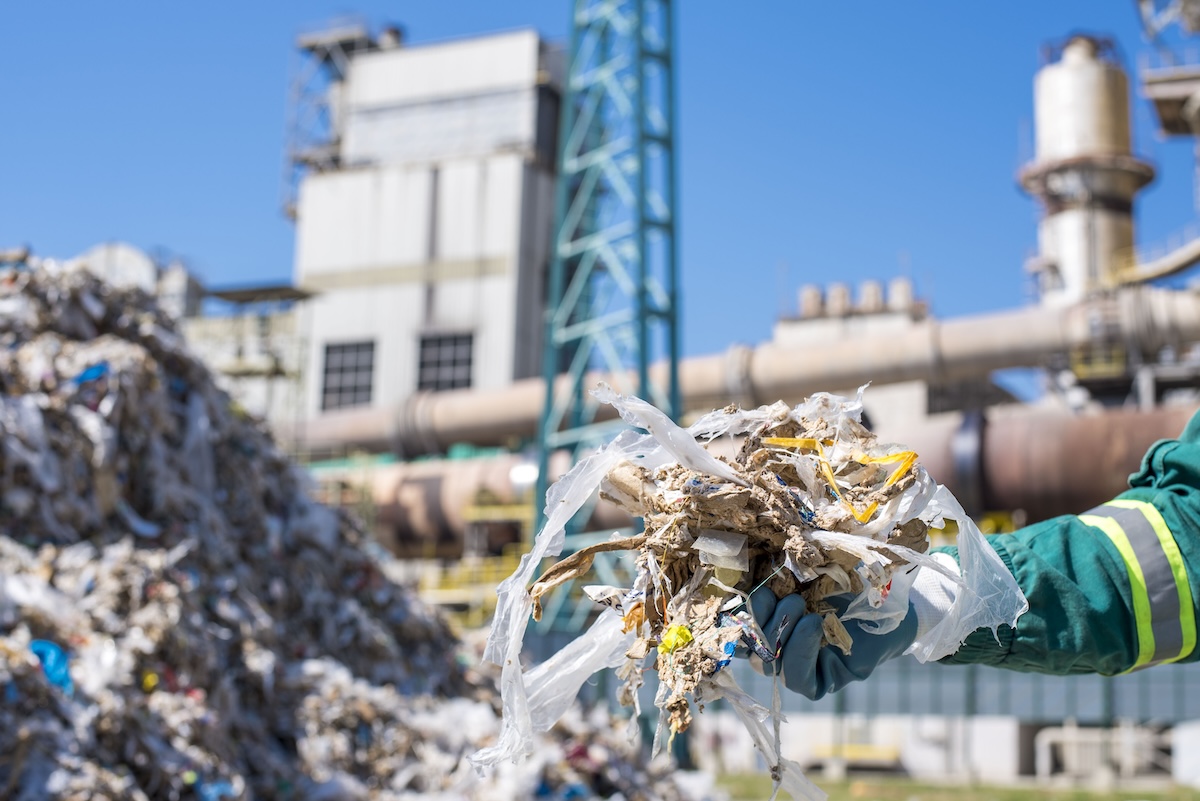Our air is full of invisible threats, thanks to pollutants we call air pollutants. These pollutants have different properties and can be classified according to different chemical characteristics.
Pollutants by property
Gases: O3, SO2, NOx, CO, CO2, each of which plays a role in the formation of complex chemical patterns with potentially harmful effects on human health and the environment.
Vapours, fumes, aerosols: chlorine compounds, cadmium oxides, acid aerosols.
Particulate matter: dust, PM5, PM10.
Inorganic particles: Ni compounds, asbestos fibres, silicates.
Organic particles: Pollen, cereal dust.
Radioactive substances: Gases – radon, elements – plutonium, polonium, uranium.
Mixture: Cigarette smoke, engine exhaust, coal tar aerosols.
Smog
Smog is a dangerous combination of air pollution and weather conditions. London’s smog, known for its roots in the Industrial Revolution, is caused by a combination of fossil fuel burning and windless days. In contrast, Los Angeles smog, or photochemical smog, is born from traffic emissions and interactions with intense solar radiation. Both forms of smog have similar effects on human health, including respiratory inflammation, eye irritation, and reduced quality of life. Efforts to limit emissions and maintain cleaner air are becoming a key factor in combating this threatening phenomenon.
Carbon dioxide (CO2)
Carbon dioxide (CO2) is an important part of our ecosystem. This naturally colourless gas is not suspicious in appearance, but its impact on the climate and the support of plant life is invaluable. With levels of around 0.02-0.04% in the atmosphere, CO2 is involved in the process of photosynthesis and is a building block for plant growth. Its ability to maintain the Earth’s temperature and act as a protective atmosphere is crucial for life as we know it.
However, in recent decades the industrial way of life has led to an uncontrolled release of CO2 into the atmosphere. Coupled with fossil fuel emissions and deforestation, the rise in CO2 levels highlights the growing need for more sustainable practices and measures to reduce our carbon footprint. We face the challenge of reducing emissions while finding new, sustainable ways to use CO2 to maintain the viability of our planet.
Symptoms in CO2 Intoxication
At higher concentrations of CO2, people may experience symptoms of intoxication, including a bitter and sour taste in the mouth, a stinging in the nose, fatigue, and impaired concentration. These symptoms vary depending on the specific concentration of CO2 in the air and can have a variety of effects on the human body. Increased vigilance and efforts to monitor CO2 levels are crucial to protect public health.
Carbon monoxide (CO)
Carbon monoxide (CO) is colourless and odourless, but its dangerous effects can be subtle and fatal. It is formed when carbon is incompletely burned, most commonly from fossil fuels. Acute exposure to lower concentrations can cause headaches, pounding of the blood in the head and chest tightness. In the case of high concentrations, death can occur within seconds. Chronic exposure may cause headache, tinnitus and dizziness. CO is often a hidden hazard, especially in homes where it can come from poor quality combustion of gas, wood or other fuels. Preventive measures, such as proper ventilation and regular maintenance of household appliances, are essential to minimize the risk of CO poisoning.
Sources of carbon monoxide
In the environment: Carbon monoxide (CO) is produced by a variety of processes in the outdoor environment, especially the burning of fossil fuels in industry, transport and natural processes such as forest fires. In the outdoor environment, CO can be impacted, especially in urban areas where high concentrations of vehicles cause increased emissions.
In the home: carbon monoxide is strongly present in domestic environments where it can pose a significant risk to occupants. The main source of CO in homes is the incomplete combustion of various fuels. Gas appliances, such as heaters, stoves, and water heaters, pose a potential risk if they are not properly maintained or are used in poorly ventilated areas. It can also be created when wood is burned in fireplaces or when vehicle engines are started in enclosed garages. Regular maintenance and ventilation are essential measures to minimise the risk of CO poisoning in the home.
Sulphur dioxide SO2
Sulphur dioxide (SO2), a colourless gas with a pungent odour, can create poor dispersion conditions along with other components of smoke and smog, leading to acidification. Inhalation can cause spasmodic bronchoconstriction and chronic exposure can lead to chronic respiratory diseases, including bronchitis.
Sources of sulphur dioxide
Sulphur dioxide (SO2) is produced by a number of sources, with the most significant emissions coming from fossil fuel combustion processes and industrial activities. Power stations, heating plants and industrial plants, especially those in the metallurgical and refining sectors, are significant SO2 producers from coal, oil and gas combustion. Internal combustion vehicles and uncontrolled domestic heating methods are other sources where exhaust and heater emissions contribute to total SO2 emissions. Not only industry, but also everyday household activities and unfavourable biomass burning conditions or forest fires contribute to the widespread emission of this pollutant gas. Controlling and minimising these sources is key to maintaining air quality and protecting the environment.
Ozone (O3)
Ozone (O3), because of its ability to form an ozone layer in the stratosphere, is an essential element for life on Earth, protecting us from harmful solar radiation. However, when ozone is present in the lower atmosphere, especially in the troposphere, it can contribute to the formation of photochemical smog and negatively affect air quality.
Ozone, an irritant gas, has various effects on human health. Acute exposures may include irritation of the conjunctivae, mucous membranes of the respiratory tract and, at higher concentrations, skin irritation. However, at appropriate concentrations it can have a positive effect on living tissue, supporting and disinfecting it.
Sources of ozone
The sources of ozone are multiple and varied. It is formed in the reactions of nitrogen-oxide and carbon-oxide emitted from the combustion of fossil fuels in industry and transport. Nitrogen-oxide emissions from motor vehicles are one of the main sources of ozone in the lower atmosphere. Industrial processes that emit chemicals such as hydrocarbons also contribute to ozone formation. Even natural sources, such as electrical discharges during storms and ozone produced by plant photosynthesis, are part of the complex system of ozone formation. For these reasons, it is important to monitor and regulate emissions of ozone-forming substances in order to maintain a balance between its beneficial and potentially harmful effects on our lives and the environment.
Oxides of nitrogen
Nitrogen occurs in the atmosphere in various oxide forms, some of which have significant environmental and human health implications. Nitrous oxide (NO) is a natural gas that plays a role in regulating atmospheric chemical processes. However, it is important to monitor its levels because in excessive amounts it can induce ozone formation in the lower atmosphere and contribute to photochemical smog.
Another important nitrogen oxide is nitrous oxide (N2O), also known as ‘paradise gas’. Although less toxic than other nitrogen oxides, its emissions have the potential to create a greenhouse effect and contribute to global warming. N2O emissions come mainly from agriculture, the use of nitrogen fertilisers and other human activities.
Nitrous oxide (N2O5) is a very toxic nitrogen oxide, similar to phosgene, and its presence in the air is usually associated with certain industrial processes. This nitrogen oxide can have serious consequences for human health and the environment. Its occurrence should be strictly monitored and regulated to minimise its potential negative impacts. With the development of better technology and environmental awareness, it is important to try to minimize the emission of these nitrogen oxides and ensure a more sustainable future.
Ammonia NH3
Ammonia (NH3) is a gas with a characteristic irritating odour that can have significant effects on human health and the environment. It is a common product of industrial processes, but also occurs naturally in soil and aquatic ecosystems. Ammonia is known for its irritant effects on the respiratory tract, mucous membranes and eyes. When exposed to low concentrations, it can cause irritation, coughing and nausea. In the case of high exposure, more serious effects may occur, including respiratory damage, pulmonary oedema and conjunctivitis.
Ammonia is often found in industries, particularly in the chemical industry and agriculture, where it is used as a fertiliser. In the home, it may be present in detergents and other chemicals. At high concentrations, ammonia can cause serious health problems, including mucous membrane burns, swelling of the lungs and even death. Therefore, it is essential to follow safety precautions and minimize exposure to ammonia to protect health and the environment.
Particulate pollutants
Particulate pollutants, including dust particles, PM5, PM10, and PM2.5, pose a serious risk to air quality and human health. These pollutants originate from a variety of sources, ranging from industrial and energy processes to everyday household activities. PM2.5 particles, up to 2.5 micrometers in diameter, are of particular concern as they can penetrate deep into the lungs, causing serious health problems.
Particulate matter can cause respiratory inflammation, chronic respiratory diseases and increase the risk of cardiovascular disease. Its harmful effects are not limited to the environment, where it can contribute to soil acidification, threaten biodiversity and promote smog formation. It is therefore essential to monitor and manage emissions of particulate matter, with an emphasis on PM2.5, to minimise their negative impacts on our health and the environment.
The road to a cleaner environment
In conclusion, it is essential to recognise that the fight for cleaner air and environmental protection is a complex endeavour that requires global cooperation and sustainable approaches. The invisible substances that enter our air have tangible consequences for human health and the environment. From the impact of carbon dioxides on the climate to the polluting effects of sulphur, nitrogen, ozone and particulate matter, it is essential to monitor, regulate and minimise emissions. Combating smog, improving urban air quality, controlling the release of toxic substances from industry and promoting sustainable practices are key to a future in which we can breathe cleaner, healthier air.
Autor: Ing. Katarína Šuranová





